- Home
- TV History
- Network Studios History
- Cameras
- Archives
- Viewseum
- About / Comments
Skip to content




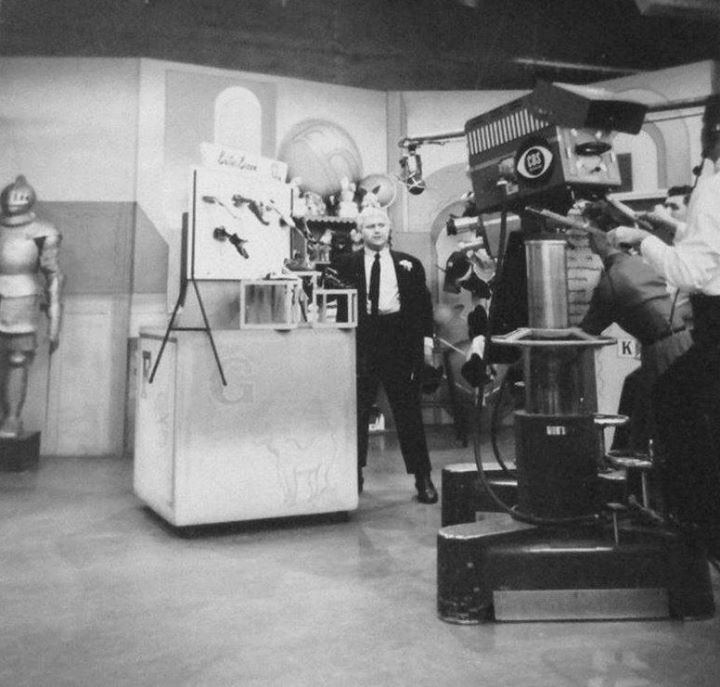

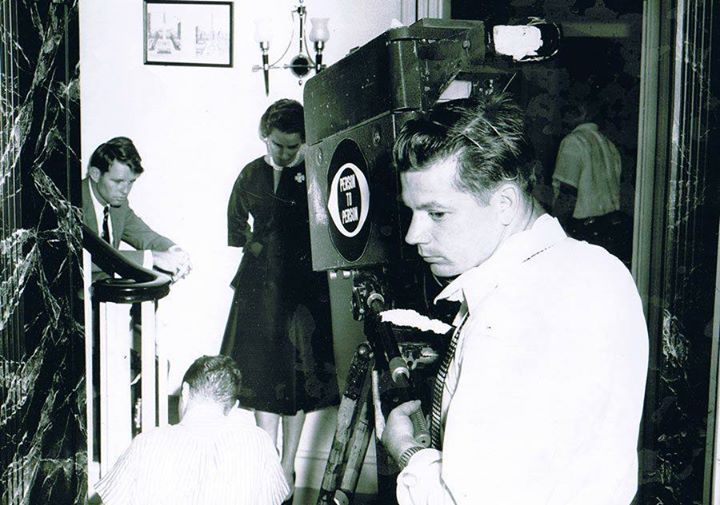

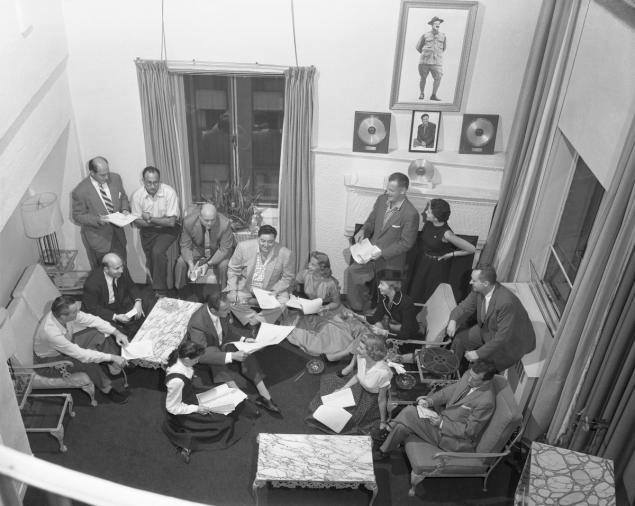

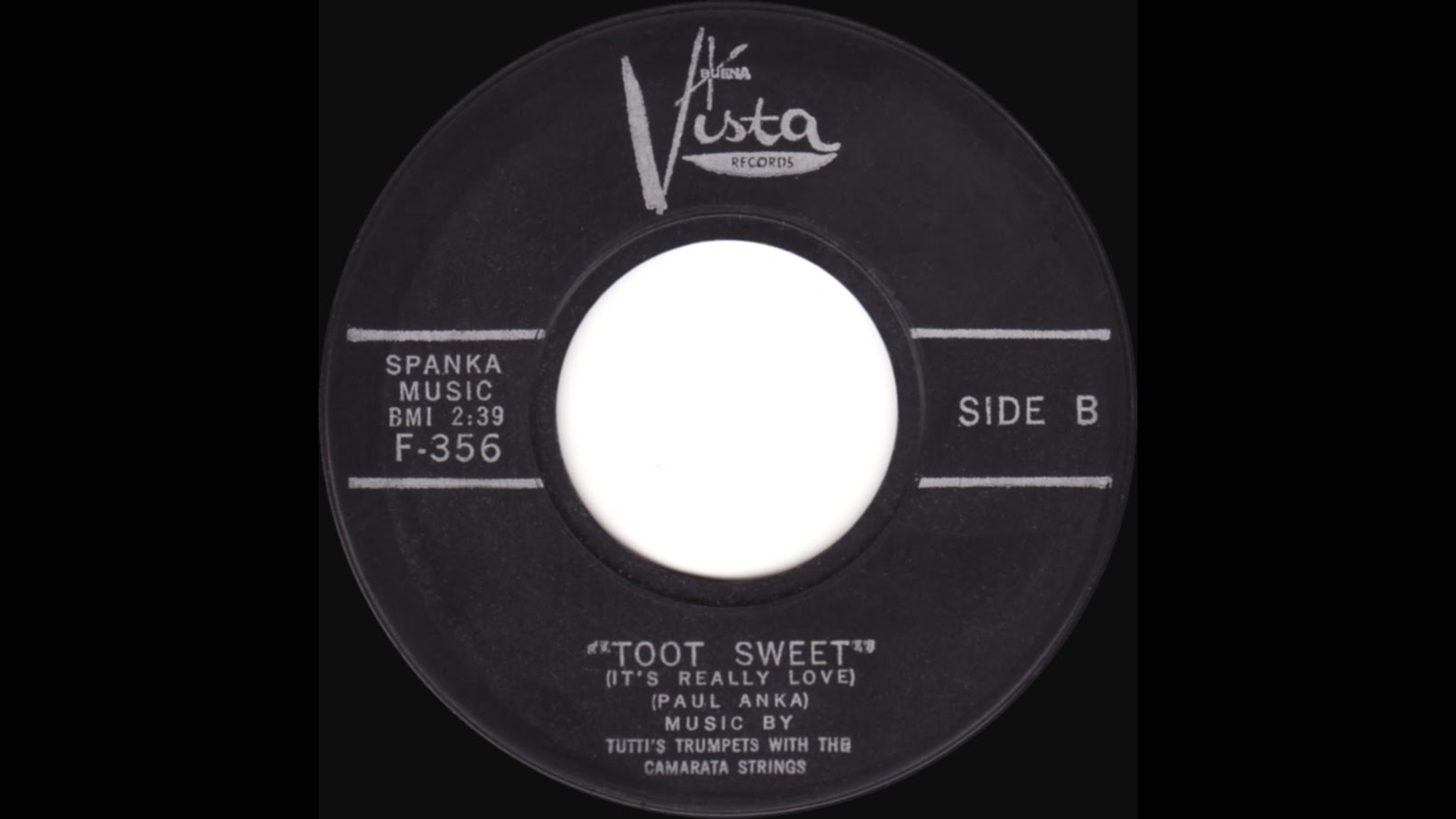

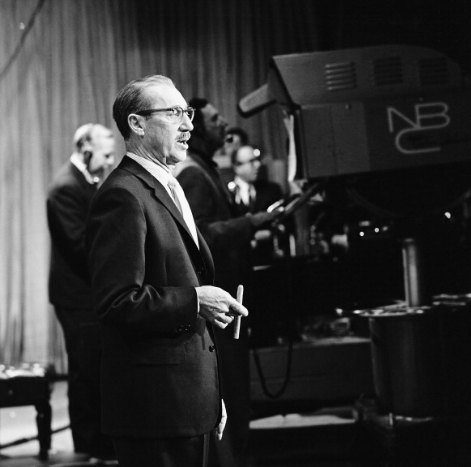

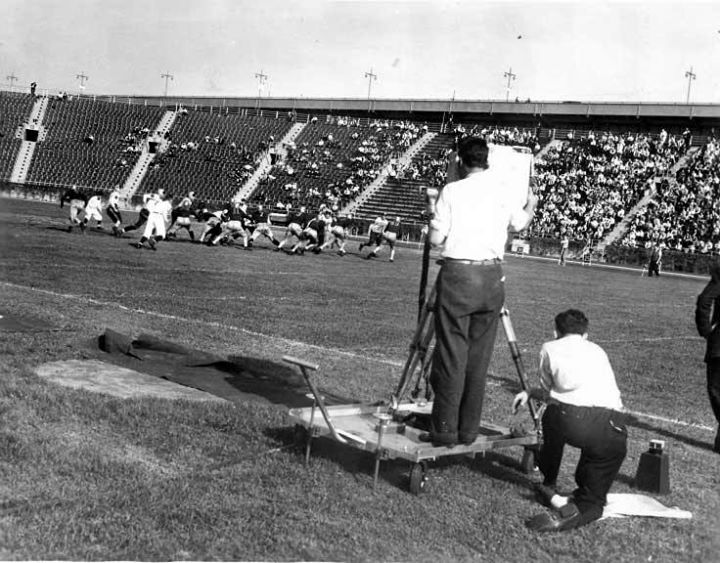

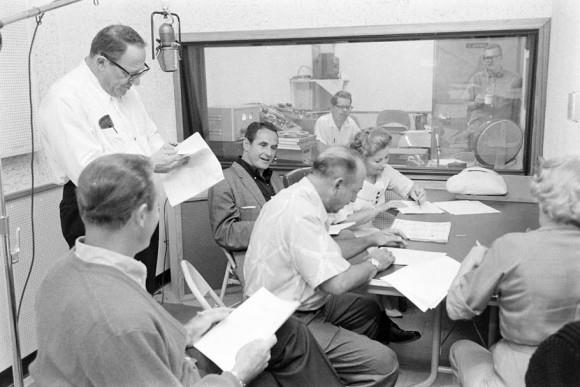





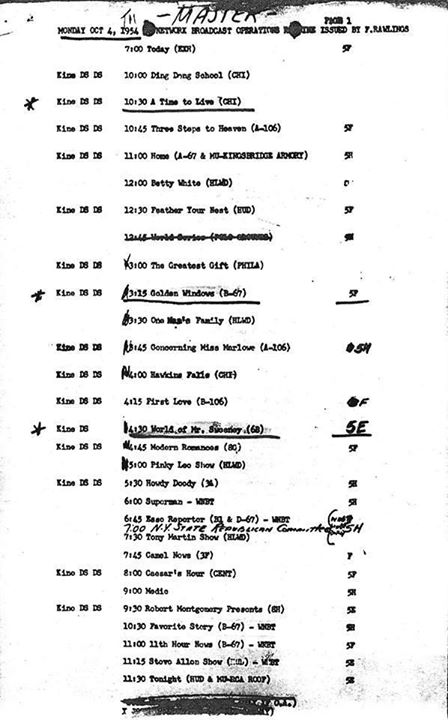

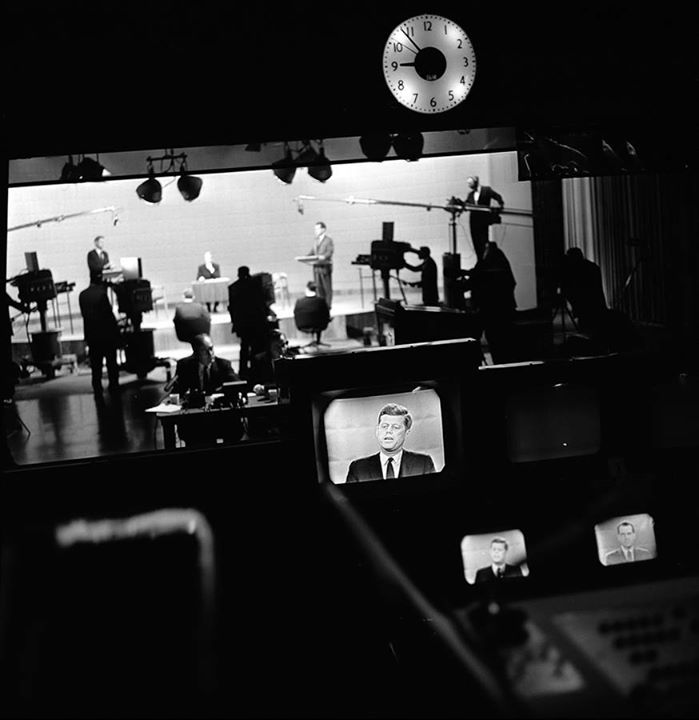


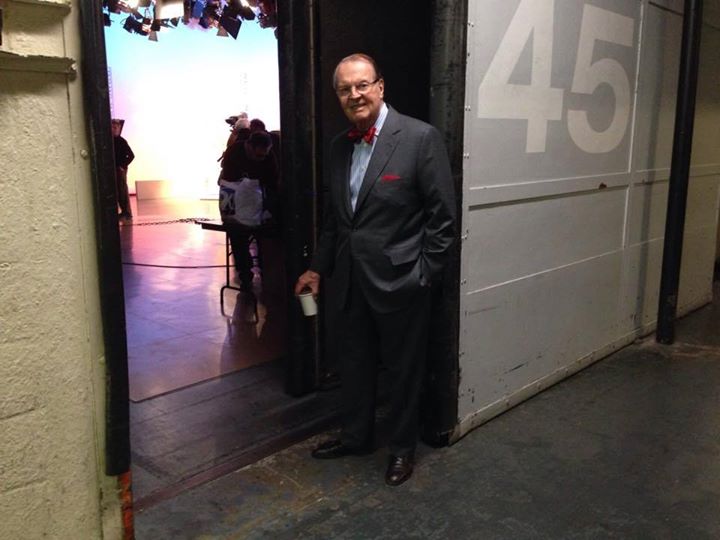



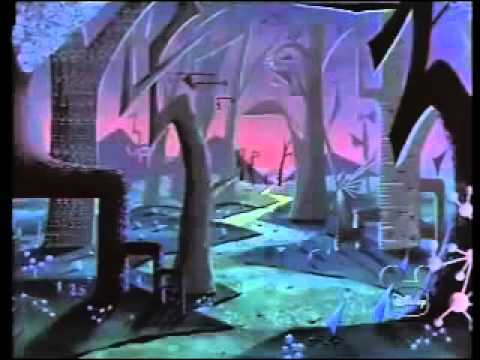

Posts in Category: TV History
Page 14 of 136
« Previous
1
2
3
4
5
6
7
8
9
10
11
12
13
14
15
16
17
18
19
20
21
22
23
24
25
26
27
28
29
30
31
32
33
34
35
36
37
38
39
40
41
42
43
44
45
46
47
48
49
50
51
52
53
54
55
56
57
58
59
60
61
62
63
64
65
66
67
68
69
70
71
72
73
74
75
76
77
78
79
80
81
82
83
84
85
86
87
88
89
90
91
92
93
94
95
96
97
98
99
100
101
102
103
104
105
106
107
108
109
110
111
112
113
114
115
116
117
118
119
120
121
122
123
124
125
126
127
128
129
130
131
132
133
134
135
136
Next » October 3, 1961…”The Dick Van Dyke Show” Debuts On CBS
On October 3, 2016
- TV History
October 3, 1961…”The Dick Van Dyke Show” Debuts On CBS
If you compare photos of this show’s sets and layout to “I Love Lucy” stage photos, you’ll see that they are strikingly similar. Even today, filmed sitcoms adhere closely to this layout and 3 camera arrangement. Enjoy! -Bobby Ellerbee
October 3, 1960…”The Andy Griffith Show” Debuts On CBS
On October 3, 2016
- TV History
October 3, 1960…”The Andy Griffith Show” Debuts On CBS
This is a very rare shot of the opening sequence being filmed in Los Angles. Go ahead…whistle the theme song…I know you know it. Enjoy! -Bobby Ellerbee
October 3, 1955…”Captain Kangaroo” & “Mickey Mouse Club” Debut
On October 3, 2016
- TV History
October 3, 1955…”Captain Kangaroo” & “Mickey Mouse Club” Debut
What a great day for kids! One new morning show and one new afternoon show!
Above is the whole story of “The Mickey Mouse Club”…a 50 minute video, full of history and the story of how it came to be for ABC and Disney.
At CBS, Bob Keeshan (who started as an NBC page, but later became the original Clarabell on “Howdy Doody”), kicked off a show that would run almost 29 years. By the way, the “Captain Kangaroo” theme song, which we all know by heart, was actually a stock music track from Chappell Music called “Puffin Billy”, which was used from ’55 till ’74.
Below, a shot in from the early years in CBS Studio 54 at Leiderkranz Hall. 53 and 54 were the two smaller upstairs studios there at 111 East 58th Street, and were equipped with Dumont cameras. 55 and 56 were the two larger studios downstairs where the soap operas were done with RCA cameras.
Seen with the Captain is the show’s puppeteer Cosmo Allegretti, who animated Mr. Moose, Bunny Rabbit, Grandfather Clock, Dancing Bear, and more. Enjoy and share! -Bobby Ellerbee
October 2, 1953…”Person To Person” Debuts With Technical Marvels
On October 2, 2016
- TV History
October 2, 1953…”Person To Person” Debuts With Technical Marvels
By 1953, television had been using it’s new, two year old ability to reach from coast-to-coast in a number of unique ways, but none were more unique than the challenges this show brought.
It took a lot of planning and a three camera crew at each remote location to do this show, and many times, there were two guests on each show, from different locations. All live!
In Los Angeles, our friend George Sunga, was the Television City production manager, and had the responsibility of working out all the west coast interviews. Needless to say, it was quite a task, but that is something the viewing audience never noticed, as newsmakers from all over the US appeared seamlessly on screen with Mr. Murrow…usually. It would be interesting to hear some of the stories from these crews about the times is wasn’t so “seamless”.
More on the photos! Enjoy! -Bobby Ellerbee
Top at home with Bing, then Jerry Lewis and below Mickey Rooney
Above, at Jane Mansfield’s home and below, the show featuring Jack Paar began in his limo as he “arrived” home in New York. Fortunately for the crew, the car didn’t have to move more than a few feet.
The Kennedy-Nixon Debate Innovations
On October 1, 2016
- TV History
Soon after the passing of CBS great Don Hewitt, I got a note from my friend Steve Dichter with an interesting question and a photo, shown below. It’s a video capture from a 60 Minutes montage of Hewitt’s early work and introduces innovation number four, but first…innovations one, two and three.
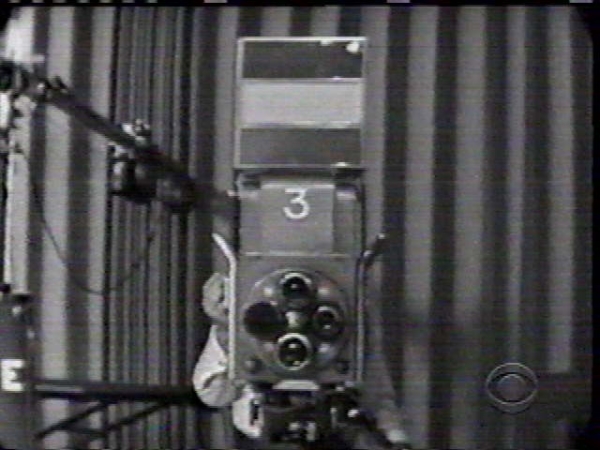
Don Hewitt was the producer of the first of four Kennedy-Nixon debates that were broadcast nationwide on radio and television in 1960. He’s seen below with both men just before air at the WBBM-TV studios in Chicago. Although he “officially” produced only the first debate, I do think he consulted on the following three. But even if he didn’t, one of his creations was there for all four events.

CBS hosted the first debate at WBBM in Chicago, NBC the second from WRC in Washington D.C., and ABC the third and fourth rounds. In debate three, Kennedy was in New York and Nixon in Los Angeles. Now that would account for innovations one and two, as this was the first time presidential candidates had debated on television, and the first-ever bi-coastal debate with split screens and more. Below is a photo of Kennedy at the WABC-TV studios in New York during the third debate. Nixon was at KABC-TV in Los Angeles.
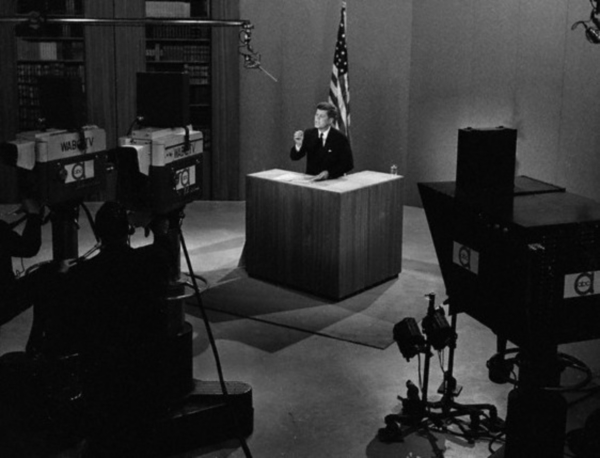
Innovation number three came in the fourth and final debate. It can be seen in the photo below. Can you spot it?

The final debate came from Studio TV 1 at ABC in New York. In the photo above from that night, notice that the mic booms have two microphones. Now there was an instant backup in case there was an audio problem. This is thought to be the first use of dual mics on booms.
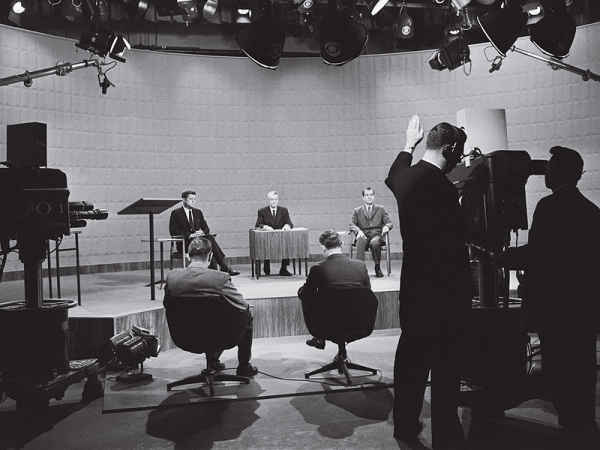
And now for the big finish…innovation number four. Above, you can see a back shot of Kennedy and Nixon in Chicago. Notice the large boxes on top of the TK11s. So far, we haven’t seen whatever those are in action. Below, the question is answered.
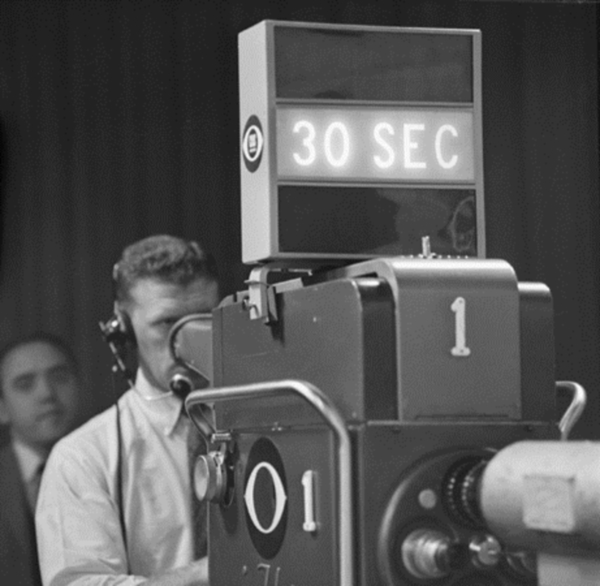
Now we can clearly see that’s a countdown clock that shows one-minute, 30-second and 10-second warnings to the candidates that their time is expiring. This was Don Hewitt’s innovation. These timers, or duplicates, were used in all four of these televised debates. If you look closely at the images above, you can see them in every studio. That’s innovation number four, but before we leave, two more photos deserve a look.
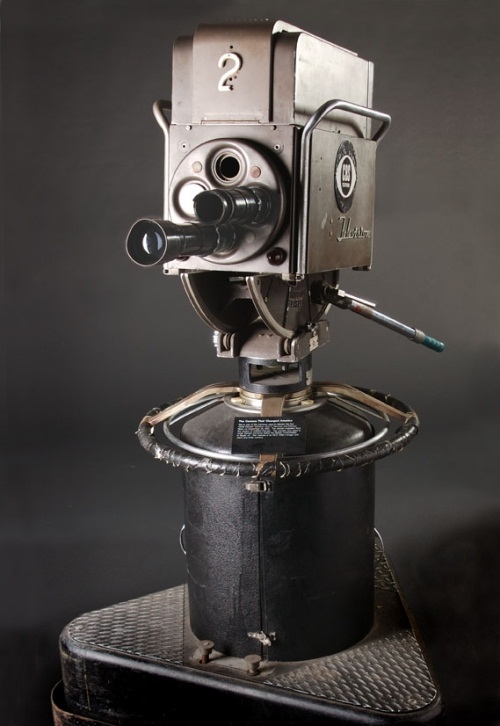
Above is one of the two remaining cameras used in the first historic debate at WBBM. It belongs to the Museum of Broadcast Communications in Chicago.
Below is the other WBBM camera, on display at the Kennedy Presidential Library and Museum in Boston.
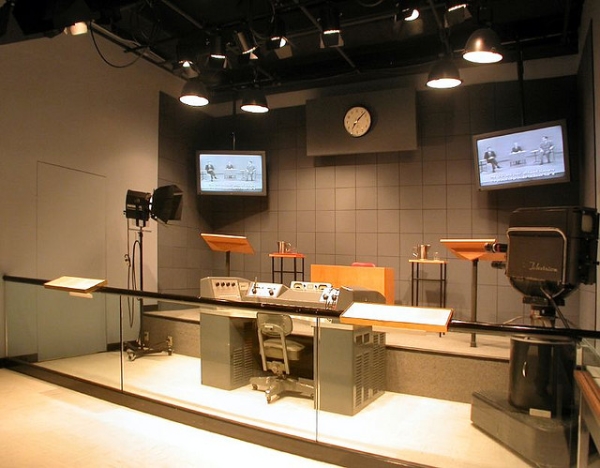
Below is a link to the MBC site and to a page showing some of Steve Dichter’s vintage television collection. Also included for the younger set is a little general background on the debates themselves.
http://www.tvhistory.tv/Dichter.htm
The key turning point of the campaign were the four Kennedy-Nixon debates; they were the first presidential debates held on television, and thus attracted enormous publicity. Nixon insisted on campaigning until just a few hours before the first debate started; he had not completely recovered from a recent hospital stay and thus looked pale, sickly, underweight, and tired. He also refused makeup for the first debate, and as a result his beard stubble showed prominently on the era’s black-and-white TV screens.
Nixon’s poor appearance on television in the first debate is reflected by the fact that his mother called him immediately following the debate to ask if he was sick. Kennedy, by contrast, rested before the first debate and appeared tanned, confident, and relaxed during the debate. An estimated 80 million viewers watched the first debate. Most people who watched the debate on TV believed Kennedy had won while radio listeners (a smaller audience) believed Nixon had won.
After it had ended polls showed Kennedy moving from a slight deficit into a slight lead over Nixon. For the three remaining debates, Nixon regained his lost weight, wore television makeup, and appeared more forceful than his initial appearance. However, up to 20 million fewer viewers watched the three remaining debates than the first debate. Political observers at the time believed that Kennedy won the first debate, Nixon won the second and third debates, and that the fourth debate, which was seen as the strongest performance by both men, was a draw.
Today & Yesterday
On October 1, 2016
- TV History
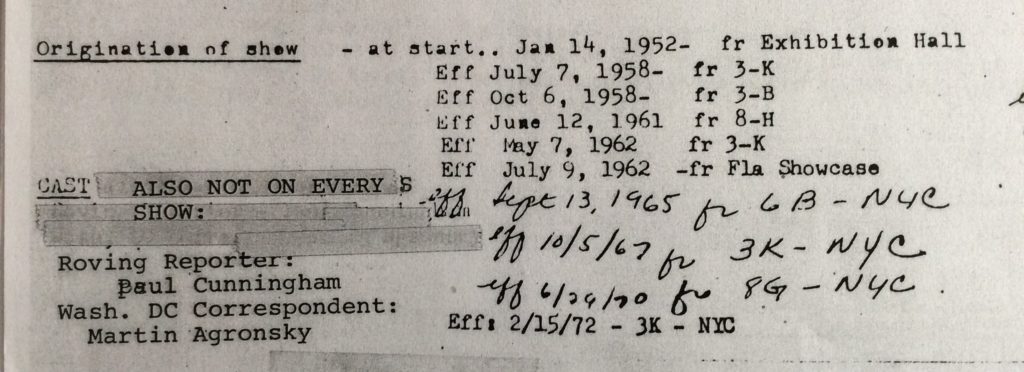
Below is a shot of the Today set in the RCA Exhibition Hall on January 14, 1952, the morning the program first went on the air. Host (or “communicator”) Dave Garroway is at his desk welcoming viewers to a new concept in television. Television pioneer – and my friend – Frank Merklein is behind the RCA TK30 to the right. NBC cameraman Howard Katzman also worked that first Today show, and all the rest, for 16 years.

Today is one of Pat Weaver’s great ideas, and like so many of them, lives on as a legacy to NBC Television’s first president. Today was the first show of its genre and it was seen live only in the Eastern and Central time zones, broadcasting three hours per morning but seen for only two hours in each time zone. Since 1958, Today is tape-delayed for the different time zones.
In 1996, NBC started feeding all four continental time zones from New York using Tektronix Profile video servers. With the final conversion of Broadcast Operations Control to high definition completed in 2009, Today is now seen in HD on network feeds live in the East and delayed for the three later time zones in the continental US.
For many years Today was a two-hour program, from 7:00 a.m. to 9:00 a.m. in all time zones except for Alaska, Hawaii and U.S. Virgin Islands, until NBC expanded it to three hours on October 2, 2000. A fourth hour was added on September 10, 2007.
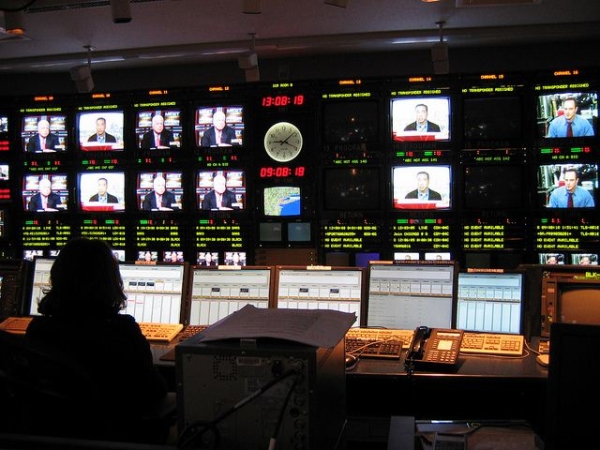
Above is the NBC Broadcast Operations Center on the second floor of 30 Rock prior to its 2009 HD conversion. Here you see the center of the “front deck” with controls for all 40 channels of NBC’s output feeds. Channels 9 through 12 (left to center) are the four time zone outputs for NBC’s regular standard definition feeds. Text displays indicate the status of each channel. Picture monitors at the top show the outputs of each channel while the lower monitor displays a received return of the respective channel for transmission assurance. Audio bar graphs similarly indicate the status of audio for each channel.
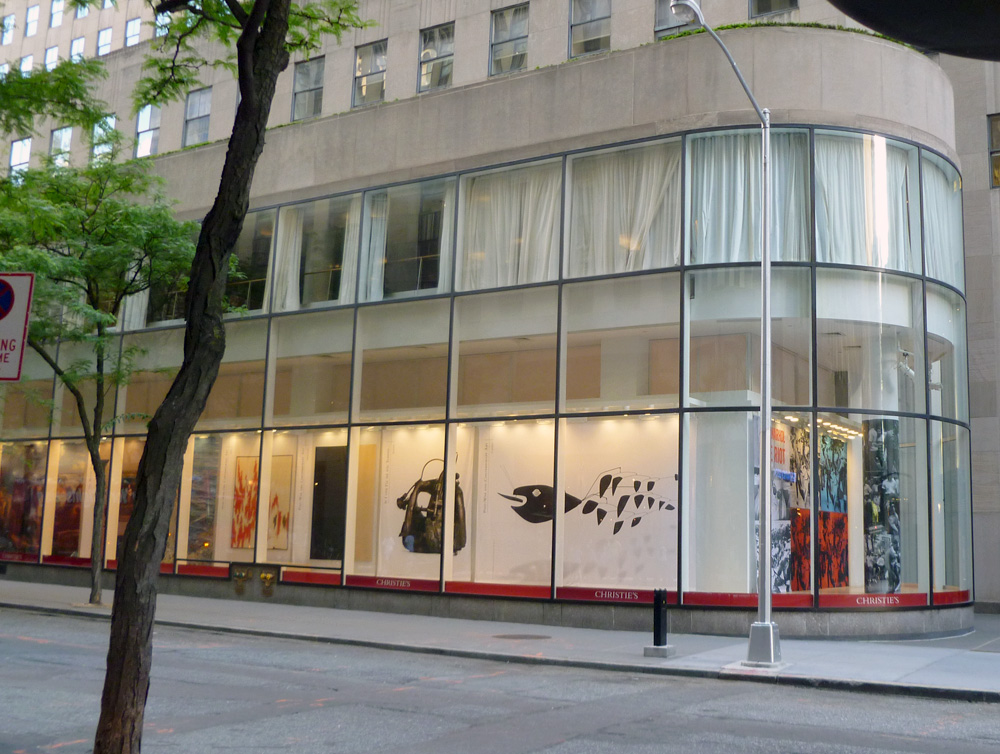
The Today program first originated from the RCA Exhibition Hall on 49th Street in a space now occupied by the Christie’s auction house, just down the block from the current studio. The first set placed a functional newsroom in the studio, which Garroway called “the nerve center of the world.” The barrier between backstage and on-stage was virtually nonexistent. Garroway and the on-air staff often walked through the newsroom set. Glimpses of camera crew and technicians were a frequent occurrence, as were off-screen voices conversing with Garroway. Gradually, machines and personnel were placed behind the scenes to assemble the news and weather reports, and the newsroom was gone by 1955.
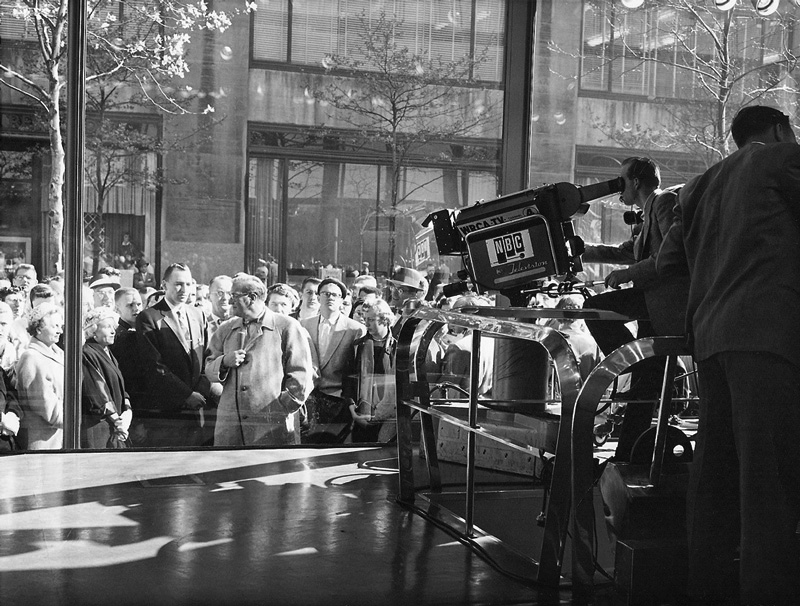
From that very first morning, the big storefront window attracted onlookers. But as Today gained popularity, the window went from being a curiosity to an attraction. During intervals when recorded music was played, the in-studio cameras would often turn and do slow pans of the faces outside. Often people would bring signs with a message for family and friends watching back home. Sometimes Garroway would go out and talk to some of the folks outside, as we see him above doing on a sunny morning in March 1957.
After a complaint from Philco that staging Today in a streetfront studio provided RCA an unfair advantage in marketing its products, Today moved out of the Exhibition Hall, broadcasting its first program from Studio 3K in the RCA Building on July 7, 1958. Soon after, most portions of Today began to be videotaped the prior afternoon, with the only live segments being Frank Blair’s news updates. Although this arrangement allowed more flexibility in scheduling guests, who were no longer tied to Today‘s early hours, the change was mainly an accommodation for Dave Garroway, who was facing exhaustion and health issues. This practice continued until Garroway left Today in July 1961.
On July 9, 1962, Today began broadcasting from the Florida Showcase, a glassed-in storefront at 61 West 49th Street at the ground level of 30 Rock, leased by the Florida tourism board. The program would originate from the storefront in the morning, then cameras and sets would be stowed before the storefront opened for regular business.
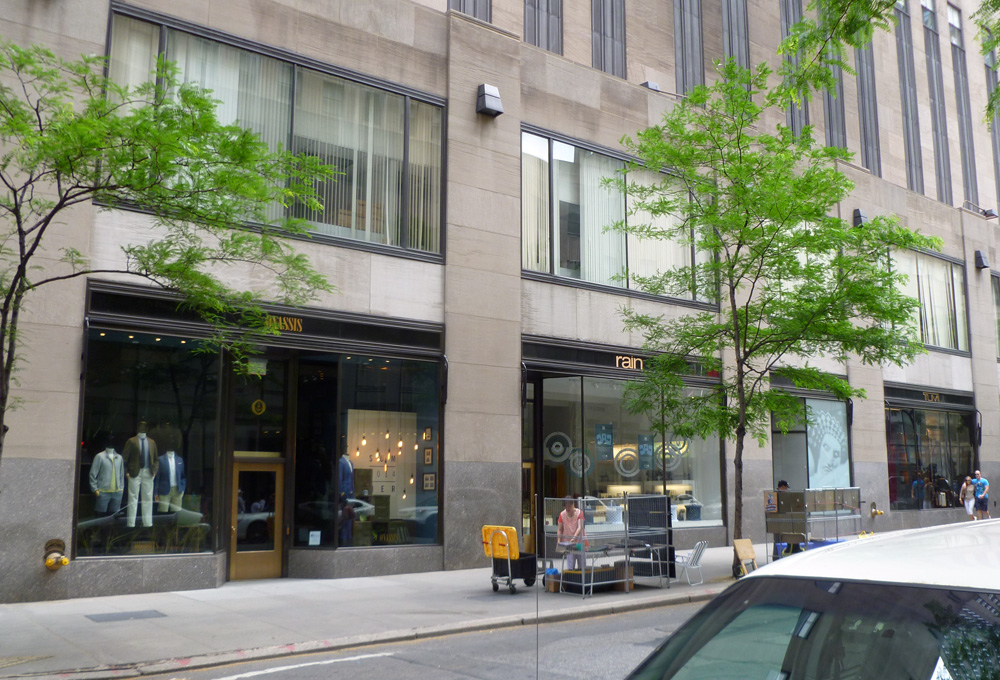
This arrangement lasted until September 13, 1965, when Today moved back inside the NBC studios. Not only did the move back to a regular studio simplify matters, but it allowed Today to go all-color. NBC couldn’t justify allocating four huge and expensive color cameras to the Florida Showcase.
For the next twenty years, the show occupied a series of studios on the third, sixth, and eighth floors of 30 Rock, notably Studio 3K in the 1970s, Studio 8G (adjacent to Studio 8H, home to Saturday Night Live) in the late 1970s and early 1980s, and finally Studio 3K from 1983 to 1994. Today moved to the current street side studio (Studio 1A) on June 13, 1994, just east of the former RCA Exhibition Hall, providing a link to the show’s 1950s origins. In this 2014 shot, note the temporary barricades that are set up each morning for the fans who gather outside.

In 2006, Studio 1A underwent a major renovation to prepare for high-definition broadcasting. While a new set was readied that summer, the program originated from a temporary outdoor studio in Rockefeller Plaza. It was the same set NBC used at the 2004 Olympic Games in Athens, in 2006 at Torino, and it would be re-used for Beijing in 2008.
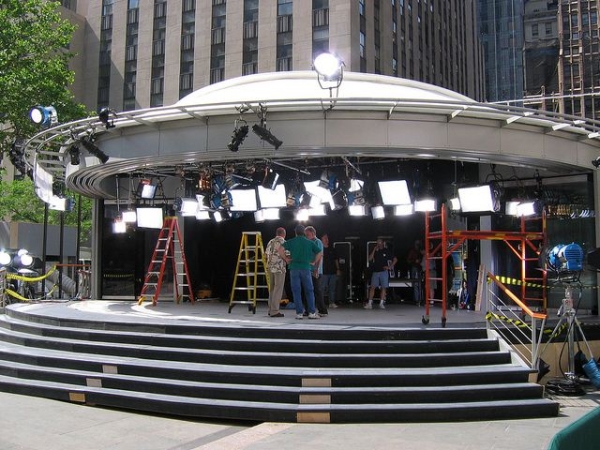
Here’s Today‘s “Summer Stage.” While Studio 1A was being completely refurbished for HD in the summer of 2006, Today was produced from this outdoor stage on Rockefeller Plaza in front of the GE Building.
On September 13, 2006, Today moved into its brand new set. The new studio is divided into five different parts on the lower level. It includes the interview area, the couch area, the news desk, the performance/interview/extra space area, and home base, which is where the anchors start the show. A gigantic Panasonic 103-inch plasma monitor is often used for graphic display backgrounds in the Satellite studio upstairs on the same level as the kitchen set.
The blue background window treatments (or shades) seen in the opening of the show in home base move up and down to allow a view of the outside from the home base. The screen is used for many things, but the main use for it is to prevent TV viewers from seeing early morning darkness outside when their own (later delayed) time zone may be in full daylight. Another reason for raising the screen is to shield TV viewers from outside visitors holding distracting signs during serious show segments.
Below are seven photos showing two different Today set dressings and all the major “areas” like the news desk, conversation sofas and performance area for bands or kitchen segments. All the cameras are SONY HD models, mostly 1500-model ENG/EFP size cameras in the buildup sleds and hard-bodied HD 1000s in the final two shots. Take a look at that cool jib camera mounted on a Vinten Fulmar ped. To get a real education on the new Sony cameras and systems, please see the Conan section of the Tonight Show History.


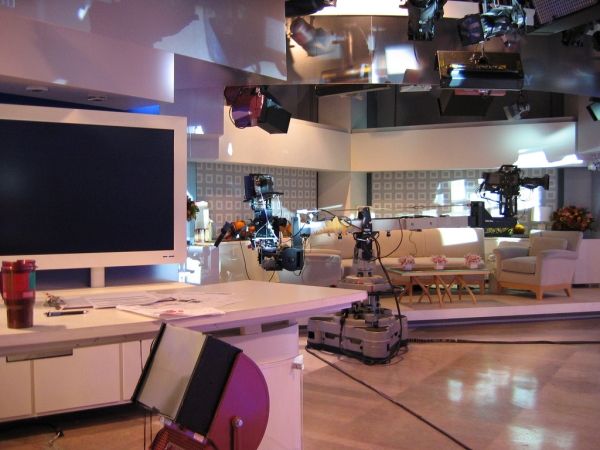


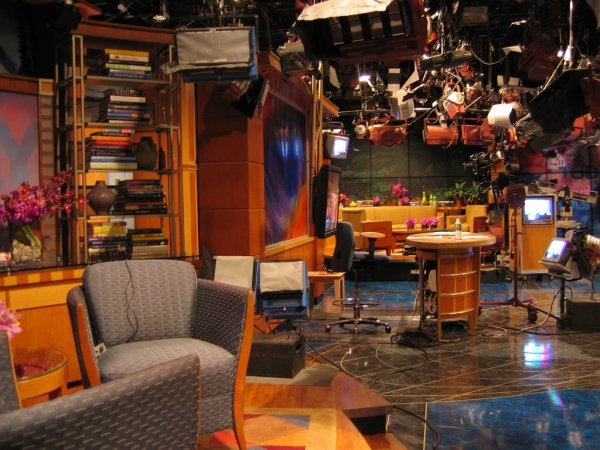
Over time some minor changes were made to the set, including the elimination of the “news desk” in 2013 in favor of a larger anchor desk with room for all four anchors. On August 16, the program left Studio 1A while it underwent a month-long renovation. The newest set configuration has a “home base” platform that can spin 360 degrees, new decor in the “sofa area” set, and the “Orange Room” area for social media.
One byproduct of the 2013 set renovation is an attraction for tourists. When the new “Shop at NBC Studio” opened inside 30 Rock in 2015, the anchor desk that had briefly served on Today became part of the store’s attractions. Visitors can sit at the desk for a photo opportunity.
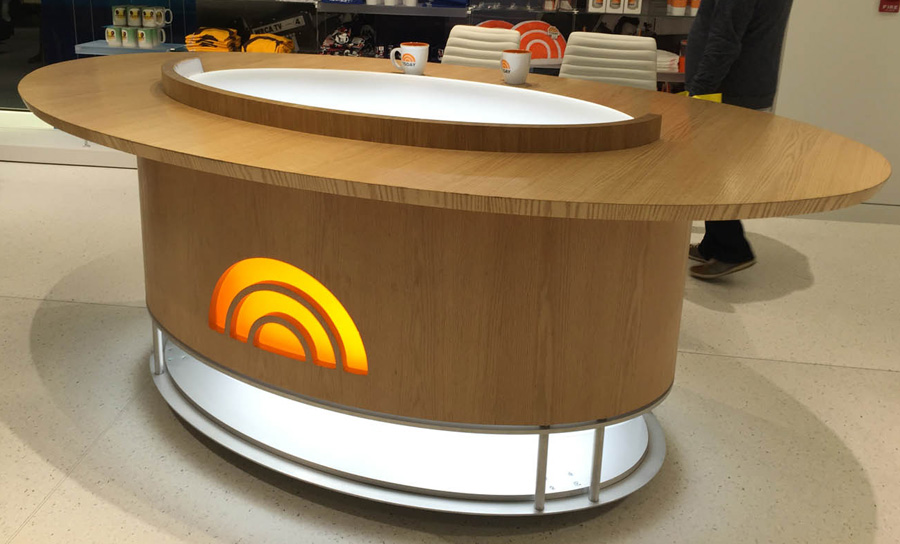
Today anchors started out as “Communicators.” Creator Pat Weaver envisioned a person whose responsibilities would go beyond the bounds of traditional sit-down news anchors and wanted well rounded, curious and authoritative hosts. Although the “Communicator” nomenclature has since dropped out of favor, the job remains largely the same. The principal anchors/hosts of the show have included:
- Dave Garroway (1952-1961)
- John Chancellor (1961-1962)
- Hugh Downs (1962-1966)
- Hugh Downs and Barbara Walters (1966-1971)
- Barbara Walters and Frank McGee (1971-1974)
- Barbara Walters and Jim Hartz (1974-1976)
- Tom Brokaw and Jane Pauley (1976-1982)
- Jane Pauley and Bryant Gumbel (1982-1989)
- Bryant Gumbel and Deborah Norville (1990-1991)
- Bryant Gumbel and Katie Couric (1991-1997)
- Katie Couric and Matt Lauer (1997-2006)
- Matt Lauer and Meredith Vieira (2006-2011)
- Matt Lauer and Ann Curry (2011-2012)
- Matt Lauer and Savannah Guthrie (2012-present)
October 1, 1955…”The Honeymooners” Debuts, Setting The Record Straight…
On October 1, 2016
- TV History
October 1, 1955…”The Honeymooners” Debuts On CBS
Setting The Record Straight On “The Honeymooners”
Above is a great shot of the cast and writers going over a script at Jackie Gleason’s office.
Today is the anniversary of The Classic 39 “Honeymooners” episodes done on film for the 1955-56 season on CBS. but the younger generation may not know, those characters were not new.
Actually, “The Honeymooners” live sketches began October 5, 1951 on Dumont’s “Cavalcade Of Stars” which Gleason began hosting in June of that year. That first sketch was six minutes long, but often, on that one hour show, they went as long as 45 minutes. These sketches continued into the late 60s.
When Gleason moved to CBS in the fall of 1951, they called Studio 50 (Ed Sullivan Theater) home, and the sketches continued on the new “Jackie Gleason Show”. It was the top show for CBS, but after a few years, Jackie needed a break from the grind of a live one hour show every week, so they decided to do a season of Honeymooners on film, which was done at Dumont’s Adelphi Theater a few blocks away.
About a third of the way through the 39 episode, Gleason began to rethink this half hour film idea. To him, 30 minutes was often not enough time to develop the story, and Perry Como’s one hour show on NBC was tough competition for a half hour show. The last show aired on September 22, 1956, and one week later, the live one hour “Jackie Gleason Show” came back to blockbuster ratings for another year, with the Honeymooners sketches included. And Away We Go! -Bobby Ellerbee


October 1, 1962…The Johnny Carson “Tonight” Theme Debuted
On October 1, 2016
- TV History
October 1, 1962…The Johnny Carson “Tonight” Theme Debuted
How Johnny Carson’s ‘Tonight’ Show Theme Song Came About…
Today, October 1, 1962, Carson took over as host and that night was the first time this song was played…at least on television. It was written by Paul Anka and here is the backstory on a song we all know now as “Johnny’s Theme”
First though, a note. In today’s earlier post that let you hear the first 3 minutes of Groucho Marx introducing Carson on his debut, the band did not play this at the 11:15 start, but at the 11:30 start (when most stations joined the network for the show), it was played.
In 1958, Anka wrote an instrumental for Salvatore “Tutti” Camarata’s band. The band’s name was Tutti’s Trumpets. Paul named the song “Toot Sweet”. Tutti was actually the head of Walt Disney Records and started the legendary Sunset Sound Recorders studio the same year this was released and this was one of the first sessions ever recorded there.
After a lyric was added in 1959 “Toot Sweet” was re-named “It’s Really Love”, and under that title was recorded by Annette Funicello on her LP, “Annette Sings”. There is a link to the recording below.
In 1962, when Johnny Carson took over the NBC “Tonight Show”,
he commissioned Anka for a new theme song, via his company
called Management Agency & Music Publishing, Inc.
Anka suggested re-using this old tune and the project was technically a deal under a “work for hire” contract. Carson knew all about royalties and wanted to be listed as an author so, being a drummer, he said he would think of something to put at the beginning of Anka’s tune to “help author it.” That something turned out to be a little drum break before the band joins in. So for 6 – 7 years there was that one-bar drum break at the beginning of the theme. Eventually that little break was shortened even further to just one and a half beats.
So, on September 12, 1962, less than a month before his debut Johnny became an “author” of his theme for copyright purposes, and got not only a piece of the publishing royalties, but a composer’s share of royalties as well.
The co authoring offer must have been worth it to Paul Anka who once said he got $200 in royalties every time the show aired. Over the course of Johnny’s 30 year run, that would give Carson and Anka about $1,664,000 apiece. Not bad for an old tune that was re-cycled twice. Enjoy and share! -Bobby Ellerbee
“Toot Sweet” https://www.youtube.com/watch?v=stvuxq5upKQ&ab_channel=the45prof
“It’s Really Love” https://www.youtube.com/watch?v=FWgg8zvQTMg&ab_channel=MarcelloFelici
The Walt Disney company’s record label Buena Vista boasted both Mouseketeer singing star Annette Funicello and veteran composer-arranger Tutti Camarata, who …
October 1, 1962…Johnny Carson Takes Over “Tonight”& 10 Years LATER!
On October 1, 2016
- TV History
At the video clip above is the audio of the first 3 minutes of the debut show with Groucho Marx introducing Johnny. The video of those first three minutes has been lost but below, we have the next best thing…rare pictures from that night!
Groucho, among a long list of other comedians, had guest hosted the show in the few months between Paar’s retirement and the expiration of Carson’s “no compete” contract with ABC. The guests that night in NBC’s Studio 6B were Joan Crawford, Mel Brooks, Tony Bennett and Rudy Vallee.
NBC’s Rare Gift To Carson On The 10th Anniversay Show Here is a clip you have probably never seen. The video below is qued up to play NBC’s surprise gift, but this is the FULL 10th Anniversary show on October 1, 1972 with guests Jerry Lewis, Dean Martin, Joey Bishop, George Burns, Jack Benny and Dinah Shore. You will be surprised by the unique token of appreciation from NBC. -Bobby Ellerbee
September 30, 1939…First Televised Football Game Broadcast By NBC
On September 30, 2016
- TV History
September 30, 1939…First Televised Football Game Broadcast By NBC
All the details are below in my previous post on this occasion. Hope your teams win this weekend! -Bobby Ellerbee
College Football Starts This Week…Here’s The First TV Game
The first ever telecast of a football game was done from Triborough Stadium in Randall’s Island NY, on Saturday, September 30, 1939 by NBC. This was the season opener between Fordham University and Waynseburg College.
Two cameras were used, the one shown above on the sidelines for closeups, and another in the press box for broader perspectives. Although there were probably less than 500 sets in the area then, viewers within 50 miles of NBC’s Manhattan transmitter could follow the action from home.
The telecast was relayed from the field by ultra short wave radio to the main transmitter of Station W2XBS via the world’s first mobile unit which we see below. This is a two bus unit with one fitted for transmission only and the other outfitted for camera and audio control.
Next Saturday is the Georgia-Clemson battle here in Athens. I’ll be there! Go Dawgs! Enjoy and share! – Bobby Ellerbee
September 30, 1960…”The Flintstones” Debuts On ABC + Demo Video
On September 30, 2016
- TV History
September 30, 1960…”The Flintstones” Debuts On ABC + Demo Video
There is much more in my original story below, with the very first animation demo of the show. The X marks and long black lines on the film are grease pencil marks for portions that were later used in on of the first episodes to air. Yabba Dabba Doo! -Bobby Ellerbee
Meet The Flintsones! Studio Shots & Original Demo Footage
Although it’s only 1:34 seconds long, this is the first ever animation of the show, and was done in the winter of 1959 as a demo. Originally, the series was going to be called ‘The Flagstones’, but there was some kind of copyright problem so the name was changed just before the show went to air on ABC on September 30, 1960.
Notice the voice of Betty isn’t Bea Benaderet, but rather June Foray (who was the voice of Rocky the Flying Squirrel, among her many works). The voice of Fred is not Alan Reed, but Daws Butler who was the voice of Yogi Bear as well as Huckleberry Hound. Daws also did the demo voice of Barney, who was voiced by Mel Blanc in the regular series.
The voice of Wilma is done by Jean Vander Pyl and she was the only actor from the pilot to continue in the series. In 1960, ABC did not have color telecine equipment in Los Angeles, so the show was broadcast in black and white, until ‘The Jetsons’ came along in 1962. Starting then, the film for both shows was taken to NBC Burbank and fed to ABC for broadcast, and these were the first color shows on ABC.
The show left the air April 1, 1966 and for 30+ years, was the most successful animated network show ever. When ‘The Simpsons’ came along, this series moved to second place.
There is more detail on the photos, so click through, enjoy and share! Yabba Dabba Doo! -Bobby Ellerbee
September 30, 1951…First West To East Series Debuts On NBC+ Rare Color Film….
On September 30, 2016
- TV History
September 30, 1951…First West To East Series Debuts On NBC
+ Rare Color Film…5 “Colgate Comedy Hour” Stars At El Capitan
65 years ago today, NBC’s “Colgate Comedy Hour” became the first regularly scheduled program to originate on the west coast, to be broadcast to the entire network. Only 26 days before this, the first ever coast to coast television broadcast had occurred, when President Truman addressed The Japanese Peace Conference in San Francisco.
This was the second hit season of this Sunday night blockbuster (opposite Ed Sullivan, on CBS) and the New York host, Eddie Cantor was flown out to host this occasion. Soon, Abbott & Costello and Martin & Lewis would become the regular Hollywood hosts.
At the link, you will see Eddie Cantor, Bud Abbott & Lou Costello and Dean Martin & Jerry Lewis arriving at NBC’s El Capitan Theater in Hollywood in 1953.
This is a short, but sweet color home movie shot on the south side of the theater, as they arrive for rehearsal. Because the hosts rotated on a weekly basis, it would be rare for all of them to be there at the same time, but I looks like that may have been the case, and this is most likely from the 100th episode celebration on March 22, 1953.
If the building looks familiar, in ’63, ABC took over the lease and called this, The Hollywood Palace. The El Capitan is at 1735 North Vine Street, just a couple of blocks north of where NBC’s Radio City West was located, and was NBC’s first “spill-over” location for television once AT&T linked the coast with the rest of the country in 1951.
On April 1, 1951 the El Capitan Theatre was leased to NBC for fifteen years at a cost of $30,500 per year. On Sunday, September 30, 1951, “The Colgate Comedy Hour” became NBC’s first regularly scheduled west-to-east television broadcast, and it came from The El Capitan, on a bi-weekly basis, with the other weeks done in New York. Thanks to our friend Rick Scheckman for sharing this clip. Enjoy! -Bobby Ellerbee
September 29, 1951…Two College Football Television Firsts
On September 29, 2016
- TV History
September 29, 1951…Two College Football Television Firsts
Did you know CBS and NBC made television history the same day? On September 29, 1951 NBC gave us the first live sporting event broadcast coast-to-coast, a college football game between Duke University and the University of Pittsburgh.
Later the same day, CBS broadcast the first college football game in color, between the University of California and the University of Pennsylvania, at Philadelphia. CBS was using their Field Sequential System. There were only a precious few sets able to receive the color signal, and the game was broadcast only in a few test markets.
Where The Ed Sullivan “Beatles” Cameras Finally Wound Up…
On September 28, 2016
- TV History
Boy, do I wish I could have one owned one of these three Marconi Mark IV cameras from WCNY-TV!
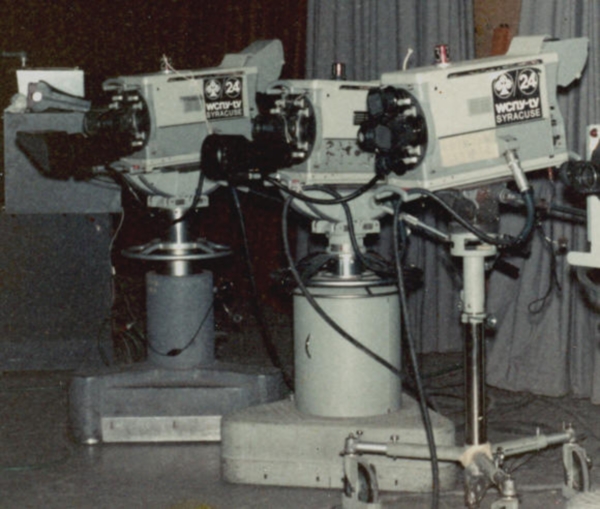
These three Mark IV cameras are very rare, and have a very interesting history. Here are a few shots of these historic cameras in action at WCNY, a PBS affiliate in Syracuse, NY circa 1969.
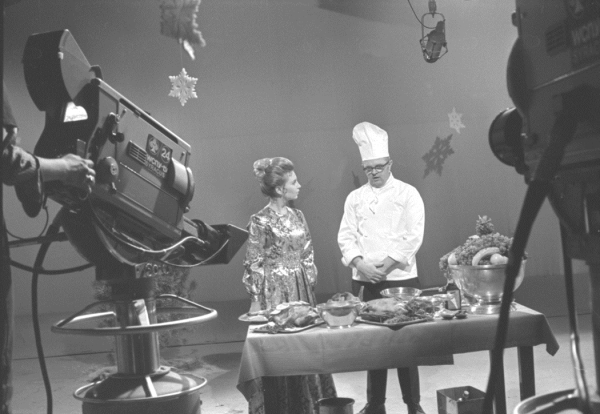
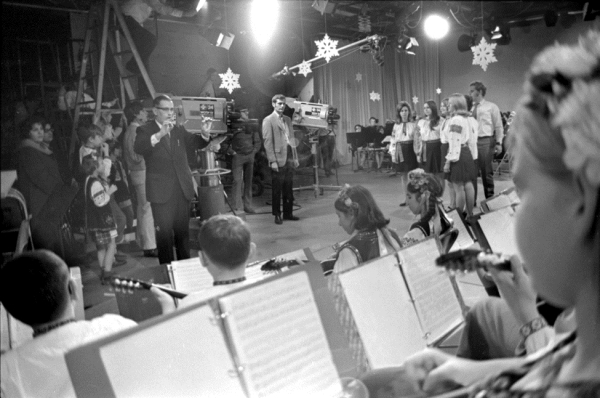
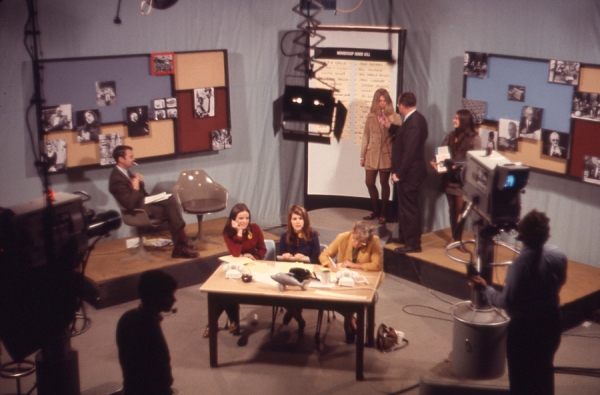
Believe it or not, these are the same cameras that first showed 73 million Americans The Beatles on The Ed Sullivan Show at 8 pm on February 9, 1964! And that’s just one of the thousands of legendary names whose images they captured.
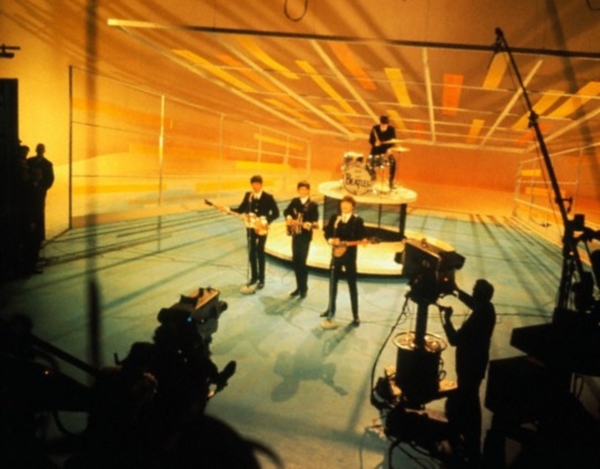
Jackie Gleason also used these cameras in Studio 50, as you’ll see below. I don’t know how many Marconi cameras were used in the theater, but when RCA cameras were in use there, there were always at least five TK10s or TK11s – four on stage and one at audience level. I’m guessing there were at least four, maybe six, of the Marconis there.
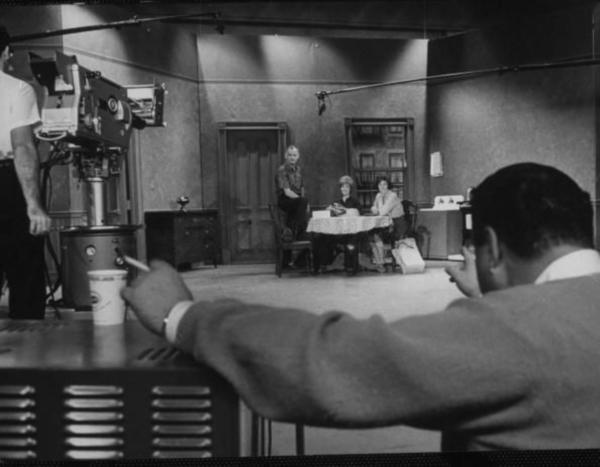
These three cameras were donated to WCNY by CBS after Studio 50, also known as The Ed Sullivan Theater, was temporarily closed to prepare for color telecasting. The show moved to Television City in Hollywood for six weeks while the Norelco PC60s and new lighting were installed. The first colorcast from Studio 50 happened on my 15th birthday, Halloween night, 1965.
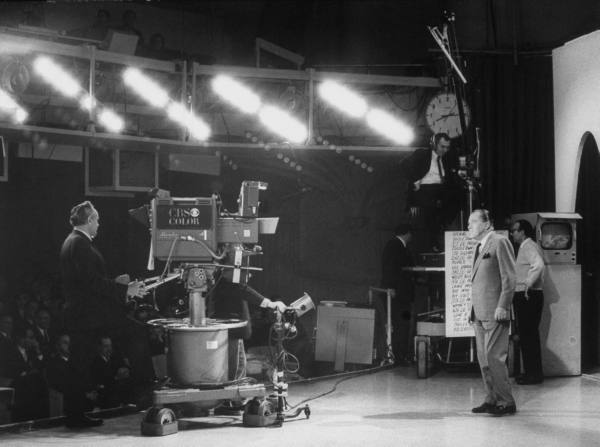
CBS was pretty consistent in donating its old equipment through the years. A lot of it wound up at colleges, educational stations and churches, including the Catholic Broadcast Center run by the Brooklyn archdiocese. That’s where my TD-1 pedestal was rescued from, thanks to “Cardinal” Paul Beck in Boston.
I have quite a soft spot for the Sullivan show and all things associated with it. I’d kill to have owned one of these cameras and would love to know if anyone has any idea where the WCNY Marconis wound up. I have been in contact with the station, but they have no recall. I am fortunate to have one artifact from the Ed Sullivan Theater though, and thank John Smith for giving me the backstage announce microphone he rescued during the Reeves Teletape years in the theater.
September 27, 1954…”Tonight” Debuts On NBC
On September 27, 2016
- TV History
September 27, 1954…”Tonight” Debuts On NBC
Below is a rare NBC operations log from October 4, 1954. This log is from one week after the debut, and reveals the origin of “the first 15 minutes”, which confounded both Jack Paar and Johnny Carson until January of 1967, when Carson demanded an 11:30 start time.
Notice at the bottom of the sheet, the show at 11:15, just before “Tonight” is…”The Steve Allen Show”!
Prior to the debut of “Tonight”, Allen’s local late show on WNBT, was very popular and it was thought best to ease the very large local audience into this new show with 15 minutes of monologue on local, NYC topics.
Now we know that this 15 minute lead in was actually designated “The Steve Allen Show” (just like the old WNBT show) and was not “officially” part of the “Tonight” broadcast, but this remnant was a pain to everyone but Allen, until 1967.
This very odd 15 minute opening window had allowed stations to join either at 11:15 or 11:30. Back in 1954, if there was local late news, it was a 15 minute cast at most. In the early sixties, many locals newscasts moved to 30 minutes, which was a problem for the hosts.
The problem Paar and Carson had with this “fu**ing 15 minutes” (as Carson called it) was that, when most stations joined at 11:30, the monologue was over and done! Only the guest part of the show was seen in the 11:30 markets.
Over the years, both Paar and Carson used different methods to fill the 15 minutes. Early on, both Paar and Carson started their monologues at 11:15, which may explain why there is so little video of the early Parr and Carson monologues. These 11:15 – 11:30 segments were most likely, again for the local NY audience,
Later, both opted to use their sidekicks and the band to fill that time, so they could begin the monologue at 11:30. But even then, both the studio and home audiences were left in limbo waiting for the star and his guests.
At this link is a rare 1965 “first 15 minutes” from 11:15 – 11:30 on New Year’s Eve from the Carson era, with Ed and Skitch doing the honors.
Also seen here are two debut ads from New York and Chicago. Notice that in Chicago, only the the last hour of the show as broadcast from 11-12 local time, which would have been the 12-1 hour of the NY show.
September 26, 1960…America’s First Televised Presidential Debate
On September 26, 2016
- TV History
September 26, 1960…America’s First Televised Presidential Debate
Tonight is the big night for us in 2016, but 56 years ago today, it was a big night for America and television as the presidential candidates met for a first ever debate on TV.
On this day in 1960, John Kennedy and Richard Nixon met at Chicago’s WBBM (CBS) for the first of four debates. Here is my story on those historic meetings, including the “new” technology…much of which was created by the producer of all four those debates, the great Don Hewitt. http://www.eyesofageneration.com/Gallery_Kennedy_Nixon.php
All four debates were simulcast live on all three networks’ radio and television networks.
On October 7, 1960, NBC Washington was the scene of the second debate as Senator Kennedy and Vice President Nixon met at NBC’s WRC-TV. The moderator was NBC’s Frank McGee, and panel of questioners included Edward Morgan from ABC, Paul Niven from CBS, Alvin Spivak from UPI, and Hal Levy from Newsday.
The third was hosted by ABC with Kennedy at WABC in New York and Nixon at KABC in Los Angeles on October 13. On October 21, the fourth and final debate was hosted by ABC in New York. -Bobby Ellerbee
Three Generations In Television: The Merklein Family
On September 25, 2016
- TV History
It’s not every day you come across a TV pioneer like Frank Merklein, or a family like Frank’s! There are two stories here. One is Frank’s incredible history in television, and we’ll get to that…but first, I want to introduce you to what could be one of TV’s only three-generation families. To make my point, let’s start with a few pictures.

Above is Frank’s father, James Merklein, in a March 1951 photo on the set of Space Cadets at ABC New York. Below we see Frank at a TK10 at NBC New York in 1952. By the way, this is on the Howdy Doody set, and the director of the show has suddenly become Frank’s dolly grip…well, at least for this shot.

But the Merklein family tree is by no means complete. Frank must have liked the old radio show I Married Joan, because in 1946 he did! Below we see a 1952 photo of Frank’s wife, Joan, on the set of The Sid Caesar Show. Joan was an actress and was hired occasionally as a “straight man” on several Comedy Hour shows.

Their first child was Jay. Guess who’s running the Norelco in the images below? Yep…Jay Merklein, who’s still with ABC in Los Angeles handling worldwide satellite feeds. Below, Jay operates a camera on Ryan’s Hope.


In the two photos below, Frank and Joan visit with Jay and his Norelco at a PGA event near their home in Florida.
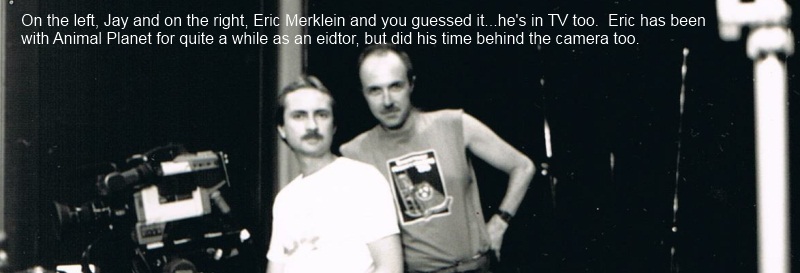
The Frank Merklein Story
Now, the really interesting part of Frank’s story. Below is a photo of Frank at my home in Georgia posing with my RCA TK41C…not an unusual pose for him, for he’s one of the original color TV cameramen.
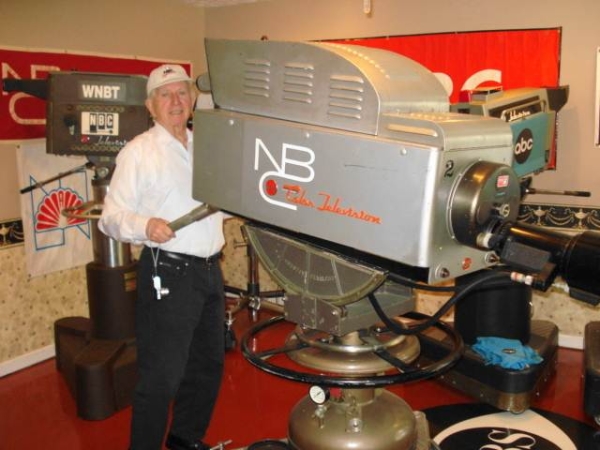
Frank worked the first RCA TK40s at the now-famous Colonial Theater in New York, where RCA and NBC did several years of experimental broadcasts, as well as the first real color broadcasts. The Colonial events started in the fall of 1951 and continued there until around 1954. Frank also worked the TK40s in NBC’s first in-house color studio, Studio 3K at 30 Rockefeller Plaza.
This is a tiny part of Frank’s history and it is really just too much to tell in detail, but I’ll hit a few more high points. Frank was in the Army with General Sarnoff’s nephew in World War II. One day Frank asked what would be a good job after the war, and Sarnoff recommended television. Frank graduated from the RCA Television School as an engineer and got a job at NBC in March 1948.
Frank worked the RCA TK10s and 30s on a lot of shows, including Howdy Doody, the Camel News Caravan with John Cameron Swayze, The Comedy Hour, Your Show of Shows, Today and many more. He later ran the color cameras on Howdy Doody, Perry Como, Kraft Music Hall, Hallmark Hall of Fame and more.
As a matter of fact, Frank was there for the January 14, 1952 debut of Today. Below you can see him in action during the program’s very first half-hour, keeping a TK30 trained on original “master communicator” Dave Garroway.
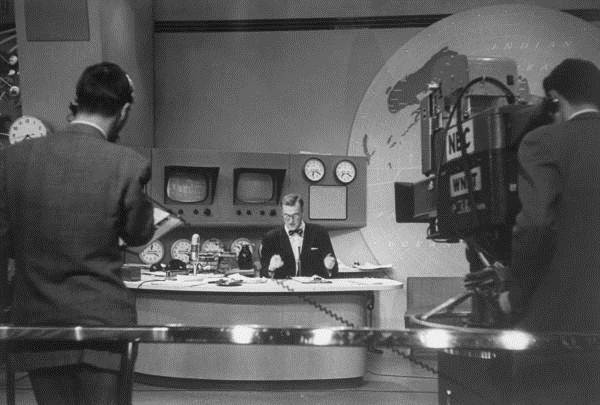
Frank also became a part of broadcast history in two other ways. About a year into the color work, Frank was appointed to the National Television Systems Committee, which had the task of coming up with a compatible standard for color broadcasting.
It was actually Frank Merklein that broke the news to Gen. David Sarnoff that the NTSC had agreed that RCA’s dot matrix system was the winning concept and would be the basis of the industry’s future. Below is part of an email from Frank to me on these subjects.
General Sarnoff was the force behind trashing the CBS mechanical wheel and to forming the color committee of all the USA manufacturers. NBC did daily shows (same every day for 2 1/2 years) from 3K and the Colonial Theater (now Lincoln Center).
When the FCC chose the NTSC system, the General was in our studio, 3K. I was on the phones with the FCC. I turned to the General and gave him a prepared message. “General Sarnoff, the FCC informs you that they have unanimously approved of the NTSC system for color.” He grinned, blew smoke from those over-sized cigars he inhaled and thanked everyone… Great memory.
If Sarnoff receives the proposed EMMY Award for Color Television in the name of the industry, I want to be the one to whom it is handed before turning it over to the Sarnoff Museum. I think I’m the only one left that was on the color committee.
Be well,
Frank
p.s. I’m glad you had heard of the famous green banana/Revlon incident in which I was involved. Stage manager Warren Philips threw a green (unripe) banana on a table for us to balance the color in our 3 TK40 cameras. Since we usually balanced our color with ripe yellow bananas, we all produced a perfect match of yellow bananas in the monitors behind us. As a result, the Revlon commercial we were setting up to tape had a bit of a hue shift. So did the color of the faces of the executives in the booth with the client when the lipstick came up blue. That was the only day we could ever hear through the glass of the control room the shouting was so loud.

A Fond Farewell To Charles Osgood…Today Is His Last Show
On September 25, 2016
- TV History
A Fond Farewell To Charles Osgood…Today Is His Last Show
Later this morning, Charles will bring is 22 year hosting job at “CBS Sunday Morning” to a close, with a very special edition of the show. As a tribute, I’ve laid out some of the many beautiful shots our friend Craig Wilson has shared over the last year or so, and hope you will enjoy seeing Charlie “at home” in CBS Studio 45. Happy Trails Charlie, and “We’ll see you on the radio”. -Bobby Ellerbee
http://www.adweek.com/tvnewser/charles-osgood-to-sign-off-sunday-morning/305558
September 25, 1964…Last Black & White Bob Hope Special Airs
On September 25, 2016
- TV History
September 25, 1964…Last Black & White Bob Hope Special Airs
https://www.youtube.com/watch?v=XkntHZ91WJI
At the link above is a Hope special from September 25, 1964. Although it was shot in black and white, it looks spectacular! This was done in Studio 1 at NBC Burbank, which had RCA TK41 color cameras, but they were pushed off to the side during this shoot.
Hope was the producer too, and to save money, he opted for B&W for as long has he could, but NBC finally put their foot down, and after this, he went to color.
Below are some rare photos of the TK60s in Studio 1. This camera used the new 4.5 inch Image Orthicon tube. The TK60 actually debuted in 1960 as the TK12, but had a few issues. By ’63, RCA had fixed the problems and re-released it as the TK60. By this time though, color was making great headway and broadcasters were reluctant to buy monochrome cameras, but many did.
It was an excellent camera and it’s only rival was the Marconi Mark IV which used the same tube. By the way, Milton Berle, Phyllis Diller, Dean Martin, and Jack Benny are Bob’s guests on the special which is quite good. Enjoy and share! -Bobby Ellerbee


The Whole Story Of Disney On Television…
On September 24, 2016
- TV History
The Whole Story Of Disney On Television…
On September 24, 1961, “Walt Disney’s Wonderful World Of Color” debuted on NBC. To mark the occasion, of the anniversary, here is that first color broadcast, and the whole story of Disney on TV, which starts at ABC. Enjoy and share! -Bobby Ellerbee
____________________________________________________
Walt Disney was the first major Hollywood producer to venture into television. His anthology series has graced network TV for 50 years, save for a couple of extended hiatuses, under eight names.
Besides the consistency of quality through the years, one of its most memorable aspects have been the title sequences encompassing a memorable musical accompaniment, rapid-edit clips of all-things Disney and Tinker Bell flying around the screen.
CBS and NBC both rejected the idea of a weekly Disney program, in part because any network airing the show was asked to help finance Walt’s idea for a new kind of amusement park: a clean, family-friendly park consisting of different themed areas. ABC signed on to the idea with the hope Walt could deliver a major success for the struggling network, which could only boast of two moderate hits in the early 1950s: The Lone Ranger and The Adventures of Ozzie and Harriet.
The cost to ABC was significant: a seven year contract valued at $35 million with licensing fees for each episode at $50,000. Additionally, the network would own a 34 percent interest in the park (Disney would buy out ABC’s stake in 1961).Tying in with the soon-to-open theme park in California, Disneyland premiered on Wednesday, October 27, 1954.
As Tinker Bell flew across the screen and the award-winning song “When You Wish Upon a Star” from Pinocchio as the theme, announcer Dick Wesson would briefly describe the four lands, leading up to the episode title: “Each week as you enter this timeless land, one of these many worlds will open to you. FRONTIERLAND– Tall tales and true from the legendary past. TOMMOROWLAND– Promise of things to come. ADVENTURELAND– The wonder world of nature’s own realm. FANTASYLAND– The happiest kingdom of them all.”
The first episode was called “The Disneyland Story” and in the first half-hour millions of viewers saw their first glimpse of the Disneyland theme park as well as previews of upcoming shows. The second half appropriately served as a tribute to Disney’s most famous cartoon character, Mickey Mouse. In fact, an often-used quote of Walt’s comes from this segment: “I only hope we never lose sight of one thing … that it was all started by a mouse.”
It was also in that first show that Fess Parker first performed a song that would soon climb to the top of the music charts and help make the unknown actor a star: The Ballad of Davy Crockett, King of the Wild Frontier.
Those Davy Crockett shows were the most popular episodes of that first year, if not the entire anthology’s run. Considered to be the first television miniseries, the three-part shows were made at a total cost of around $700,000– a large amount for any television show at the time. All the episodes were filmed in color, although broadcast by ABC in black and white.
Their success led the Disney Studios to edit the three episodes into a feature film for theaters in the summer of 1955. Davy Crockett, King of the Wild Frontier grossed a then-impressive $2.5 million. However, this was rather small compared to the estimated total sales of Davy Crockett merchandise: $300 million! Nobody anticipated its success, least of whom Walt himself.
At the end of the third installment, poor Davy was killed (off-screen, of course) at The Alamo. So for the following season, two additional Crockett episodes were filmed chronicling his early exploits. A second feature re-edited from these programs was released in 1956 as Davy Crockett and the River Pirates and was also a success.
Thanks to Davy Crockett, Disney had indeed delivered a hit: Disneyland was #6 in the 1954-55 Nielsen ratings and won the Emmy for Best Variety Series. In its second year, the series would achieve its highest seasonal rating as the #4 show.
By 1958 viewers had obviously become quite familiar with the different lands and a full description was no longer deemed necessary. Although the anthology was renamed Walt Disney Presents, the series itself should have changed its name to simply “Frontierland,” as these made up the bulk of episodes for the next three seasons.
Due almost entirely to the success of Davy Crockett, ABC executives insisted on the Western emphasis. Instead of Mickey and friends, viewers were often treated to the adventures of Texas John Slaughter, Elfego Baca (with Robert Loggia), and Leslie Nielsen as Francis Marion, The Swamp Fox. There was not much Walt could do as he was bind to a seven-year contract. Once that expired in 1961 he was free to change networks if he wished. That is exactly what he did. More importantly, Walt could now do what he could never convince ABC to go along with, and that was to broadcast in full color.
The majority of the ABC episodes had been filmed in color. This hindsight would pay off beginning in the first summer of reruns on NBC. It was that network’s commitment to colorcasting that Walt found most attractive, if not marketable. With sponsorship from RCA (then owner of NBC), Walt Disney’s Wonderful World of Color premiered at 7:30 PM on Sunday, September 24, 1961.
With an original song by Richard and Robert Sherman, viewers with color sets were mesmerized as flashes of animated red, yellow and blue fireworks burst behind Sleeping Beauty’s castle at Disneyland. Up flew Tinker Bell and with a few waves of her wand filled the screen with more colors blending into a kaleidoscope of Disney characters as a chorus thundered, “COLOR!” This sounded much better than “MONOCHROME!” which is how most viewers that first season saw Wonderful World of Color.
Still sales of color TV’s increased dramatically over the following months and many baby boomers have fond memories of watching Uncle Walt Sunday nights in living color. Like the first episode in 1954, “An Adventure in Color/Mathmagicland” consisted of two main segments. The first half introduced the new format and a new character: Professor Ludwig Von Drake, a relative of Donald Duck.
Disney’s top duck himself took center stage for the second half in a cartoon about mathematics, first released to theaters in 1959. The Von Drake episodes could be considered some of the funniest hours in the anthology series, due in part to Paul Frees’ often-improvised dialogue as the befuddled Professor.
By the mid-1960s Wonderful World of Color had firmly established itself as a top twenty series. Walt’s segments became as anticipated as the presentations themselves. Whether it be a simple introduction, interaction with animals or the cartoon characters or hosting a show from Disneyland, his warm and friendly manner made each episode something special to watch.
During this time a number of multi-part episodes made especially for the series were filmed in Europe and released theatrically there. One notable example is the three-part 1964 miniseries “The Scarecrow of Romney Marsh” which was released to U.S. theaters as Dr. Syn – Alias The Scarecrow twelve years after its initial television airing and European theatrical release. Appearing in the title role was Patrick McGoohan, whom would later star in the cult TV classic, The Prisoner.
Walt Disney died on December 15, 1966. The episode broadcast the following Sunday was “Disneyland Around the Seasons” in which Walt talked about new and upcoming attractions at his beloved park (in its original telecast, a portion of Walt’s narrative was substituted by a brief tribute from Dick Van Dyke and NBC newsman Chet Huntley).
After his final introduction aired on April 2, 1967 there would be no regular host for the remainder of the anthology’s original run. The series continued as Walt Disney’s Wonderful World of Color for another two years. To many it was still seen as Walt’s Show even though he only turned up in a brief clip during the opening titles and in reruns of course.
The name itself was fast becoming antiquated. In 1969 the anthology became The Wonderful World of Disney. For a new theme, Disney staff composer George Bruns arranged a medley of familiar tunes: “Someday My Prince Will Come” and “Whistle While You Work” from Snow White and the Seven Dwarfs, “When You Wish Upon a Star,” “Chim Chim Cher-ee” from Mary Poppins, “Zip-A-Dee-Doo-Dah” from Song of the South, “Davy Crockett,” and “Bibbidi-Bobbidi-Boo” from Cinderella.
During the next decade the arrangement of songs in the opening medley as well as the film clips would change every few years or so to include more recent fare (even the familiar fireworks scene that started each show would change in 1972, shifting to Cinderella’s Castle at Walt Disney World in Florida).
The overall anthology product would also change during the ’70s, although not necessarily for the better. The number of original episodes would gradually dwindle, with an increasing reliance on feature films (generally less successful movies and none of the full-length animated features) and reruns from earlier seasons.
A common criticism of the anthology was that episodes originating from Disneyland or the Walt Disney World Resort were nothing more than glorified commercials. Essentially this was true, but ultimately they became something of historical time capsule pieces. They’re fun to watch now just to see how much things have changed at the Disney parks and resorts through the years.
For a while ratings remained strong, so consistent that NBC gave The Wonderful World of Disney an automatic renewal through 1978. But in 1975 a slow decline began. Moved back to 7 PM and facing new competition from CBS’s 60 Minutes, Disney fell out of the top twenty. Further erosion occurred in early 1977 as ABC successfully launched the teen-oriented drama The Hardy Boys/Nancy Drew Mysteries. It was also of no help that audiences were turning away from the Disney product in general, with the exception of the theme parks and merchandising.
Facing a threat of cancellation from NBC- itself having become ratings challenged following ABC’s rise to #1 in the mid 1970s- the anthology underwent a major makeover in 1979. For the first time since the 1960s, an original theme was developed. John Debney and John Klawitter composed a disco-flavored song that welcomed viewers to the new Disney’s Wonderful World.
Bridging the two parts of the theme was a program preview narrated by Rowan and Martin’s Laugh-In announcer Gary Owens. Dazzling computer-generated graphics and an abundance of clips – but no fireworks or Tinker Bell – supported the feeling expressed in the lyrics that this was “the friendly old place” with “a happy new face.”
Appropriately, the closing music thanked viewers for watching. In a flashback to the original themed format, many episodes were divided into one of four categories: Fantasy Night, Adventure Night, Comedy Night and Animation Night. Beneath the flashy surface however was more of the same: few original shows, re-treads of theatrical movies, far too many repeats and even frequent preemptions. Ratings did increase slightly and that was enough to give Disney another two years on NBC before executives announced the end of the “world.”
Almost immediately, CBS came to the rescue promising a renewed commitment to original episodes and a move to Saturday nights. After a summer of extensive promotion, Walt Disney premiered on September 26, 1981 with part one of the 1969 hit The Love Bug. Ironically, this was actually a rerun having previously aired as a two-hour Disney’s Wonderful World presentation! Like the former series the opening graphics were computer-generated, this time featuring still photos and illustrations from the theme parks, films and characters. The sole theme once again was an instrumental version of “When You Wish Upon A Star.”
There was a substantial increase in original episodes that first CBS year as were the overall ratings. Some of the original shows served as pilots for proposed spin-offs; a few of which did make it to limited-run status, but no further. The second CBS year saw another increase in reruns and with that came rumors that the anthology had finally outlived its purpose and would be canceled. The series was even taken off the air for several months following a move to Tuesdays in a futile attempt to increase viewership.
On April 18, 1983 when Walt Disney Productions launched The Disney Channel, thereby focusing nearly all its television resources on the cable service. Shortly thereafter, CBS announced that Walt Disney would only be seen as an occasional special. On September 24, 1983, an important era in television history came to a quiet conclusion with “Walt Disney’s Mickey and Donald,” a compilation of classic cartoons. Or had it?
Following a management shakeup in September 1984, newly installed Chairman Michael Eisner expressed his desire to return Disney programming to network television on a regular basis. A number of individual programs came first, including The Golden Girls produced by the new Touchstone division.
The television flagship would ultimately be an anthology series. ABC had the most interest in reviving the format and amid much fanfare The Disney Sunday Movie premiered on February 2, 1986 hosted by Eisner himself. Again an instrumental version of “When You Wish Upon A Star” was used as the theme and even Tinker Bell came out of retirement to open each week’s show.
For most of its 2 1/2 year run, Sunday Movie aired in a two-hour format. To let viewers know this new series bore a direct kinship to the old, a few classic reruns were seen during the summer of 1986. Nostalgia and ratings were high initially, but both eventually wore down. The old nemesis 60 Minutes was as strong as ever and eventually pushed Sunday Movie back to one hour, then off ABC altogether.
As if history was repeating itself, NBC gladly picked up the series in 1988, re-christening it The Magical World of Disney. A “wheel” format of rotating miniseries was instituted including new Davy Crockett adventures (coincidentally, five episodes were produced– the same number as the original version), an action-adventure series called “Wild Jack” (three episodes made), a remake of “The Absent-Minded Professor” starring Harry Anderson of NBC’s hit sitcom Night Court (only two episodes made) and various special presentations.
This all soon faded back into the venerable (and vulnerable) anthology setting. In the 1989-90 season there was another attempt at miniseries programming in the form of a comedy series starring Barbara Eden called “Brand New Life” which was created by Chris Carter (yes, that Chris Carter of The X Files!). But after two lackluster years, the anthology series was again canceled with The Magical World of Disney name retained until 1996 for The Disney Channel’s weekly showcase of premiere movies and specials.
In 1996 The Walt Disney Company purchased Capital Cities/ABC Inc. for a record $19 billion, and shortly thereafter things seemed to come full-circle. In 1997, the anthology returned to Sundays as … The Wonderful World of Disney. Setting the tone for the weekly two-hour series, the opening show was the 1995 theatrical release Toy Story.
Other Disney animated and live-action blockbusters frequently turn up and there have been some outstanding original productions such as “Oliver Twist” with Richard Dryfuss, “Ruby Bridges,” the Whitney Houston-produced remake of “Cinderella,” “The Shirley Temple Story,” “Eloise at the Plaza,” “Eloise at Christmastime” (both based on the popular children’s books), remakes of “The Miracle Worker,” “Annie” and “The Music Man”; and in 2001 “The Man Behind the Myth,” a documentary about Walt’s life and work co-produced by his daughter Diane Disney Miller.
Until the fall of 2000 there was a mesmerizing (and Emmy-winning) title sequence as Tinker Bell flew across the screen to the music of “When You Wish Upon A Star” and “A Whole New World” from Aladdin. This was replaced by (in this author’s opinion) the worst opening sequence the anthology had ever produced as menacing images show people’s homes magically turning into castles.
Apparently someone or some people at ABC thought so too as a brief “Welcome to The Wonderful World of Disney” announcement is often used instead. In September of 2003, the series was moved from Sundays into yet another familiar time slot– Saturdays at 8 PM alternating with The ABC Saturday Movie of the Week. Classic episodes from the original 1954-83 run aired as part of The Disney Channel’s “Vault Disney” until that programming block was canceled in September 2002. Select episodes such as the original Davy Crockett and Disneyland-themed programs have been released in special DVD sets.
In an ever-changing and challenging environment both in fiction and in real-life, the Disney anthology series remains a haven for quality programming. It is something that has never wavered and reminds us that the world is still wonderful.To help commemorate 50 years of The Wonderful World of Disney, here is some general information of the show’s history, including some of the awards won over the decades.
Hosts
Walt Disney (October 27, 1954 to April 2, 1967)
Michael Eisner (February 2, 1986 to September 9, 1990– he continues to appear on an occasional basis in the current version)
Announcers*
Dick Wesson (1954-1979)
Dick Tufeld (Alternate Announcer, 1977-1979)
Gary Owens (1979-1981)
Mark Elliot (1981-1983)
Broadcast History
Disneyland (ABC)
October 27, 1954-September 3, 1958: Wednesday, 7:30 PM-8:30 PM
Walt Disney Presents (ABC)
September 12, 1958-September 25, 1959: Friday, 8:00 PM-9:00 PM
October 2, 1959-September 23, 1960: Friday, 7:30 PM-8:30 PM
September 25, 1960-September 17, 1961: Sunday, 6:30 PM-7:30 PM
Walt Disney’s Wonderful World of Color (NBC)
September 24, 1961-September 7, 1969: Sunday, 7:30 PM-8:30 PM
The Wonderful World of Disney (NBC)
September 14, 1969-August 31, 1975: Sunday, 7:30 PM-8:30 PM
September 14, 1975-October 19, 1975: Sunday, 7:00PM-8:00PM
October 26, 1975-December 7, 1975: Sunday, 7:00PM-9:00PM
December 21, 1975-September 4, 1977: Sunday, 7:00PM-8:00PM
September 11, 1977-October 23, 1977: Sunday, 7:00 PM-9:00 PM
October 30, 1977-September 2, 1979: Sunday, 7:00 PM-8:00 PM
Disney’s Wonderful World (NBC)
September 9, 1979-September 13, 1981: Sunday, 7:00PM-8:00PM
Walt Disney (CBS)
September 26, 1981-January 1, 1983: Saturday, 8:00 PM-9:00 PM
January 4, 1983-February 15, 1983: Tuesday, 8:00 PM-9:00 PM
July 9, 1983-September 24, 1983: Saturday, 8:00 PM-9:00 PM
(two irregularly scheduled airings on Tuesday, May 3, 1983 and Saturday, May 21, 1983)
The Disney Sunday Movie (ABC)
February 2, 1986-September 6, 1987: Sunday, 7:00 PM-9:00 PM
September 13, 1987-September 11, 1988: Sunday, 7:00 PM-8:00 PM
The Magical World of Disney (NBC)
October 9, 1988-July 2, 1989: Sunday, 7:00 PM-8:00 PM
July 9, 1989-July 23, 1989: Sunday, 8:00 PM-9:00 PM
August 6, 1989-February 25, 1990: Sunday, 7:00 PM-8:00 PM
March 4, 1990-April 15, 1990: Sunday, 7:00 PM-9:00 PM
April 22, 1990-May 6, 1990: Sunday, 7:00 PM-8:00 PM
May 27, 1990-July 22, 1990: Sunday, 7:00 PM-9:00 PM
August 5, 1990-September 9, 1990: Sunday, 7:00 PM-8:00 PM
The Wonderful World of Disney (ABC)
September 28, 1997- August 31, 2003: Sunday, 7:00PM-9:00PM
September 27, 2003-Present: Saturday, 8:00PM-10:00PM
Emmy Awards and Special Honors
1955:
-Best Variety Series: Disneyland
-Best Individual Show: “Operation Undersea,” Disneyland
-Best Television Film Editing: “Operation Undersea,” Disneyland
1956:
-Best Producer of Filmed Series: Walt Disney, Disneyland
-Best Action or Adventure Series: “Davy Crockett” on Disneyland
1962:
TV Guide Award for Best Dramatic Program of the Year:
“The Prince and the Pauper,” Walt Disney’s Wonderful World of Color
1964:
-Outstanding Program Achievements in the Field of Children’s Programming: Walt Disney’s Wonderful World of Color
-Outstanding Achievement in Art Direction or Set Design:Carroll Clark and Marvin Davis for Walt Disney’s Wonderful World of Color
1971:
Special Classification of Outstanding Program Achievement:
The Wonderful World of Disney
1981:
Special Certificate of Honor:
“Disney Animation: The Illusion of Life,” Disney’s Wonderful World
1990:
Outstanding Children’s Program:
“A Mother’s Courage: The Mary Thomas Story,” The Magical World of Disney
1998:
-Art Direction for a Variety or Music Program:
Randy Ser, Edward L. Rubin, Julie Kaye Fanton for
“Rodgers & Hammerstein’s Cinderella,” The Wonderful World of Disney
-Main Title Design: The Wonderful World of Disney
April 7, 2003:
The Wonderful World of Disney was inducted into the National Association of Broadcasters Hall of Fame. This was a prestigious honor for television’s longest-running prime time series. Past recipients have included programs such as All in the Family and M*A*S*H, as well as individuals Carol Burnett, Ted Koppel and others.
Page 14 of 136
« Previous
1
2
3
4
5
6
7
8
9
10
11
12
13
14
15
16
17
18
19
20
21
22
23
24
25
26
27
28
29
30
31
32
33
34
35
36
37
38
39
40
41
42
43
44
45
46
47
48
49
50
51
52
53
54
55
56
57
58
59
60
61
62
63
64
65
66
67
68
69
70
71
72
73
74
75
76
77
78
79
80
81
82
83
84
85
86
87
88
89
90
91
92
93
94
95
96
97
98
99
100
101
102
103
104
105
106
107
108
109
110
111
112
113
114
115
116
117
118
119
120
121
122
123
124
125
126
127
128
129
130
131
132
133
134
135
136
Next »